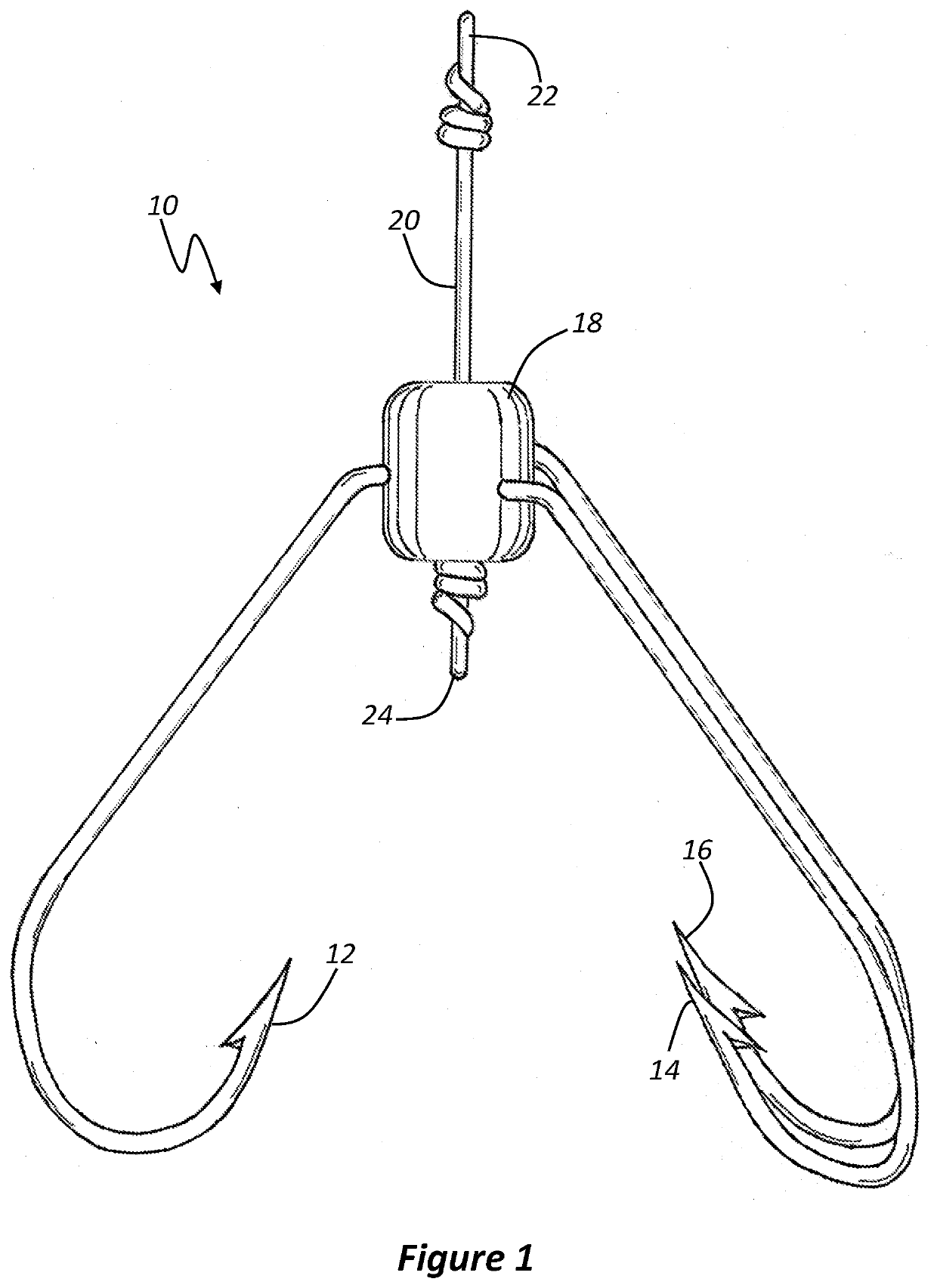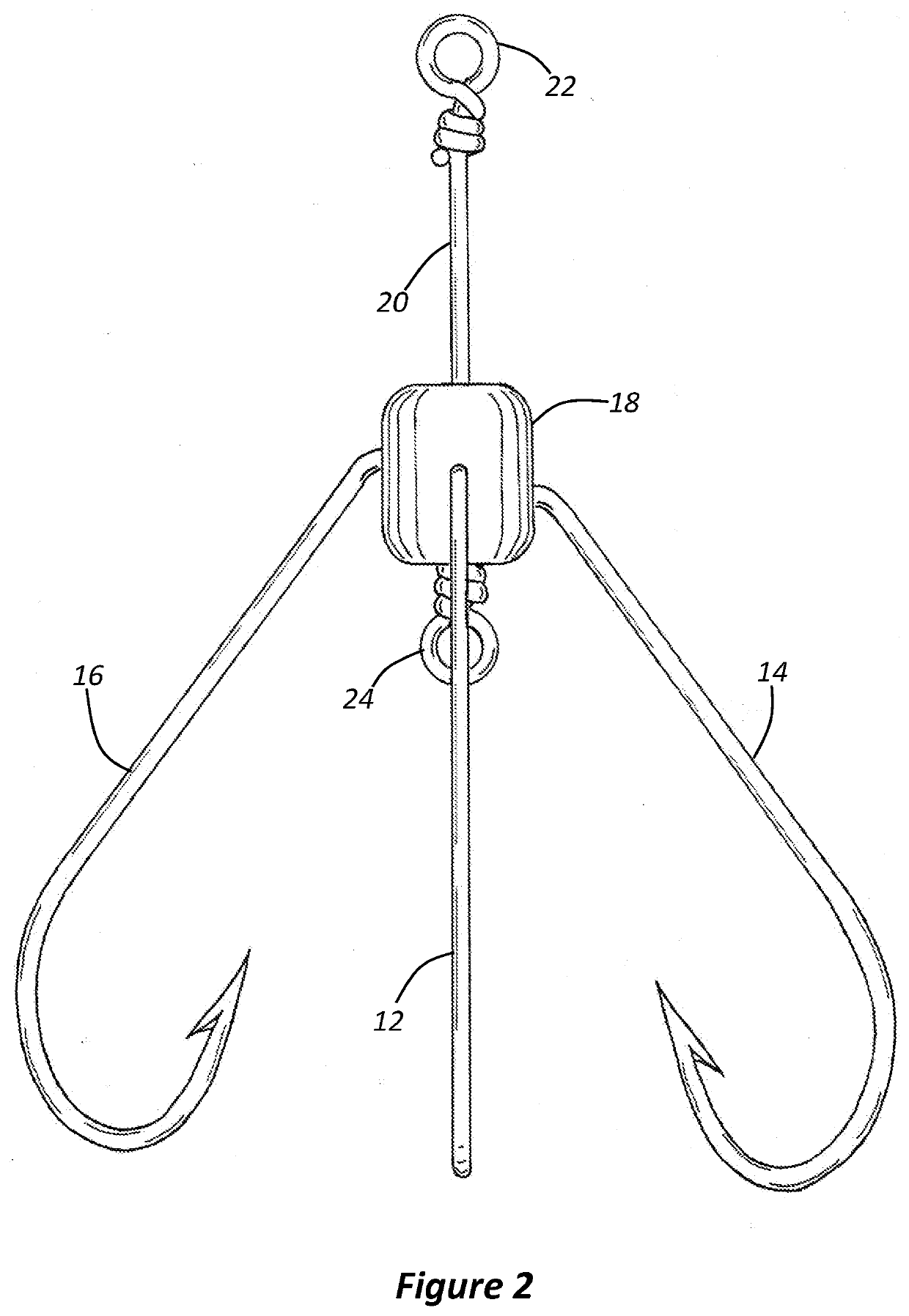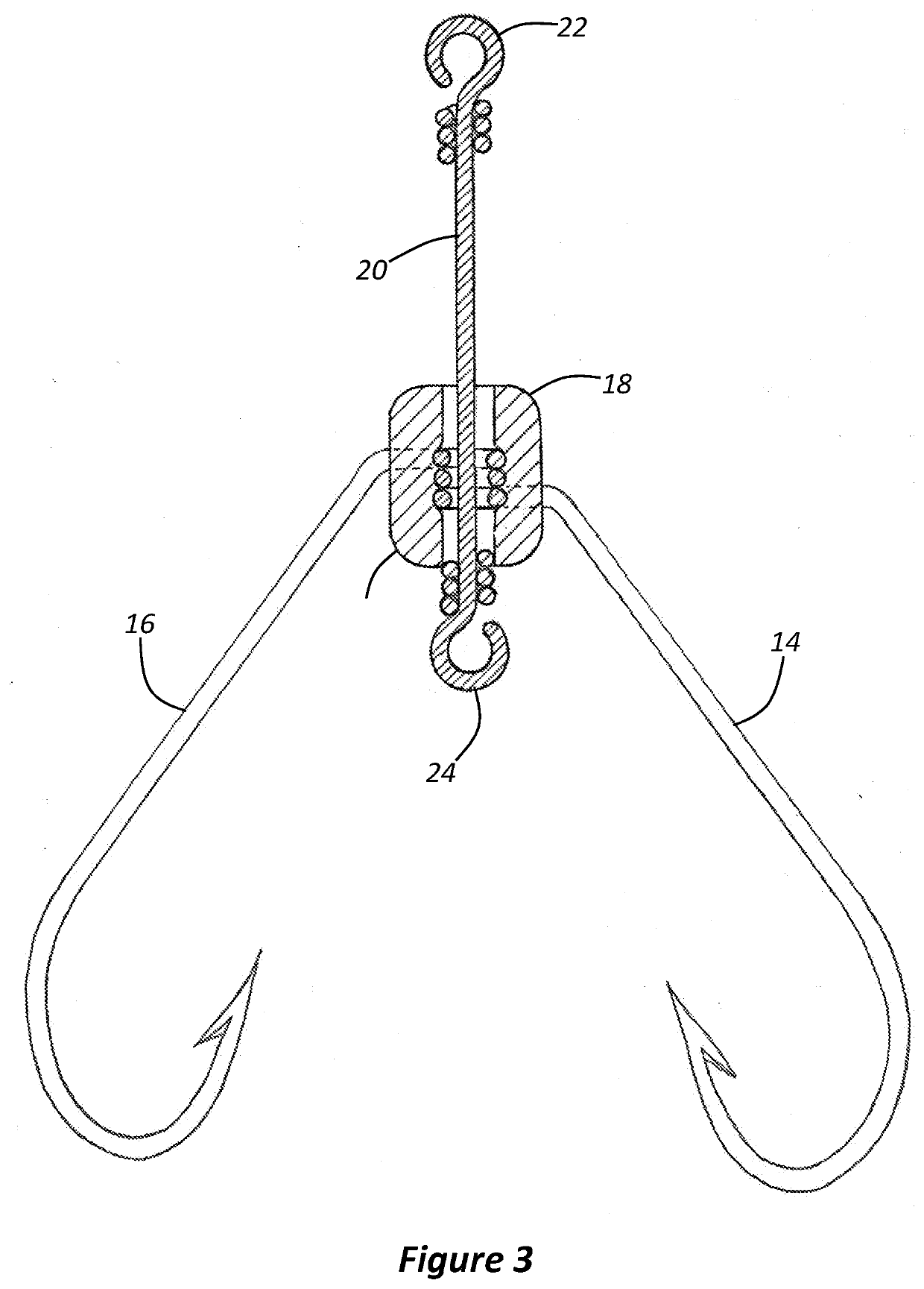Fish hook
a technology for fishing hooks and hooks, applied in the field of fishing hooks, can solve the problems of snagging, lost tackle, and common problems of available hooks, including standard hooks, treble hooks, umbrella hooks and double hooks,
- Summary
- Abstract
- Description
- Claims
- Application Information
AI Technical Summary
Benefits of technology
Problems solved by technology
Method used
Image
Examples
Embodiment Construction
[0022]FIG. 1 shows a three-pronged hook 10 according to an embodiment of the present invention. This embodiment comprises three inwardly facing prongs 12, 14 and 16. The hook has a flexible hub 18, which is made of flexible rubber.
[0023]During assembly of the hook, each prong 12, 14 and 16 is fed into the hub 18 and through a side of the hub 18. The point on each prong can pierce the flexible rubber. Each prong is fed through the wall of the hub 18 until the eye of each prong stops the passage of the prong through the wall of the hub. The eyes of each prong are shown in the side section view of FIG. 3.
[0024]In other embodiments of the invention, the hub 18 can be a single moulded item of plastic made by 3D printing, or otherwise.
[0025]The three prongs 12, 14 and 16 are aligned on top of one another, but the eye of each prong enables it to rotate about central axis.
[0026]A shaft 20 is fed through the bottom of the hub 18 and through each of the eyes of the three prongs 12, 14 and 16 ...
PUM
 Login to view more
Login to view more Abstract
Description
Claims
Application Information
 Login to view more
Login to view more - R&D Engineer
- R&D Manager
- IP Professional
- Industry Leading Data Capabilities
- Powerful AI technology
- Patent DNA Extraction
Browse by: Latest US Patents, China's latest patents, Technical Efficacy Thesaurus, Application Domain, Technology Topic.
© 2024 PatSnap. All rights reserved.Legal|Privacy policy|Modern Slavery Act Transparency Statement|Sitemap



